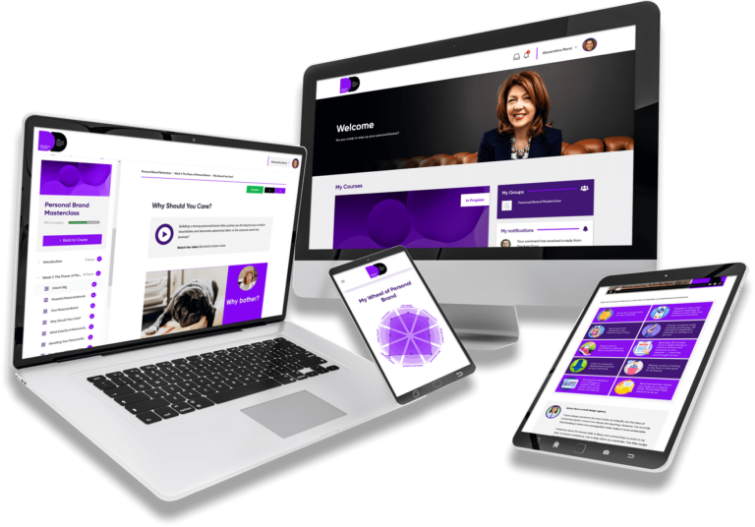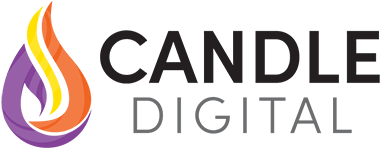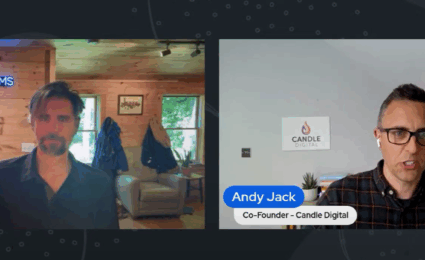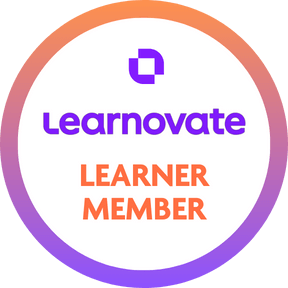The Rise of Blended Learning

It’s been a turbulent 20 months for training providers. COVID-19 has had a huge impact on the training industry and the implications of this are still being felt.
But for those who have been able to ride out the past year, coming out of the restrictions presents an opportunity to reflect and re-evaluate the business’s direction moving forwards.
COVID-19 forced all of our clients at Candle Digital to change how they deliver in one form or another. Many have thrived – they were able to adapt quickly to the new circumstances given the technical foundations that were already in place and their foresight for online learning gave them a strong basis to work from. But it was a tough period for all involved, particularly in those first few months.
Many of our clients have made internal changes, particularly with how they work within their teams. Many are now operating with a mix of remote and office-based work and recognise the opportunities and lifestyle benefits that come with this.
So given the last couple of years, Accessplanit’s ‘State Of The Training Industry Benchmark Report’ for 2021 was always going to make for interesting reading. However, one stat stands out: 75% of training providers intend to focus on blended learning within the next 12 months.
Perhaps unsurprisingly, there has been an increase in training companies looking to deliver blended learning. We’ve seen it with our clients, many of whom are looking to mix their face-to-face, live online and self-study online components to provide a more flexible format.
The drivers for this are both demand-driven and internally driven. For training providers, it’s more of a challenge than it ever used to be for organisations to get everyone together in the same room for face-to-face training. Many companies have switched to a mix of remote and office work and some employees are understandably reticent to mix with others as they had done previously. If everyone can get together too, the client will want to make sure this precious time is used as effectively as possible.
For training companies themselves, a blended delivery can bring some cost benefits. Rather than reverting back to an entirely face-to-face only model, delivering online is increasingly the norm and valued by the client. Given that training providers had to quickly work out how to deliver online in 2020, there’s also a much better understanding of what online formats can and can’t do.
So if you’re a training provider looking to adopt blended learning within your organisation, there are a handful of key things that would be worth your consideration:
1. Designing your blended training

Naturally, blended training shouldn’t be a case of simply appropriating breaking down your courses and assigning elements of it to a face-to-face or online format. The clue’s in the title – it should be blended! To get the most from the mediums, you’ll want to consider the benefits of each format and how you can create a training flow that will take advantage of these.
For example, you may find that the online elements are best used in getting your learners up to speed with the foundational information about your subject area (the ‘input’). This could be entirely self-paced or delivered via online webinars – with a view to completing this before a face-to-face session. This ensures everyone has a good baseline understanding before they meet in person.
The face-to-face session could then be structured to take advantage that everyone is together. Networking, collaborative problem solving, sharing stories – these are all things that can be more of a challenge to deliver effectively online and should be elements you incorporate in your workshops.
You can then follow up a face-to-face session with some further online activities to reinforce understanding and strengthen connections between participants.
In short, aim to use each format to its advantage, but think (and test) how they can work well together as a blend. Capture feedback as you go through this process and refine this into the next iteration.
2. Your technical infrastructure

To deliver effective blended learning, you’ll need to have a platform that’ll be robust and flexible enough to support the blended learning journey as a whole. Your system should act as the glue that keeps the blended learning journey together.
Learners will want to be clear where they are in their blended training – they’ll want to know what’s next, what they need to complete, where they need to attend and what’s due when.
To do this, you’ll need to have an online platform that combines the delivery of online learning with the event management capabilities for the face-to-face elements. Consider your options wisely! (If this is you, we can help).
3. Maximising your impact

For many face-to-face providers, their only interaction will be with them during classroom time, but having an online component to your training presents opportunities to build deeper relationships with your learners at scale and over time.
For example, you could add extra value to the learner by providing online resources related to their training. They can use these in their day-to-day role and access them at any time after their training. That’ll keep them coming back to your brand and position you as the experts.
You can also reinforce what’s been taught with a regular email, helping to keep your training top of mind. Or just check in with an informal email to see how your learners use what they learned in their day-to-day roles. This gives you the chance to understand what’s worked, what hasn’t and you can use this feedback to refine your training.
This all helps to increase the impact of your intervention and keeps your brand in front of your learners (which is particularly useful if you want advocates for your training during renewal time).
—
Blended learning is here to stay (and arguably, it’s taken a lot longer than some had imagined!). We’re excited to see training providers explore how they can take advantage of the different delivery mediums and deliver an impactful intervention that makes a real difference for learners and clients.
If you need some help getting your blended learning plans moving forwards, get started by clicking here.
Fresh Insights Direct to Your Inbox
Enjoyed this article?
Join the Candle Digital Mailing List
You’ve Mastered Your Craft. Now Scale It.









